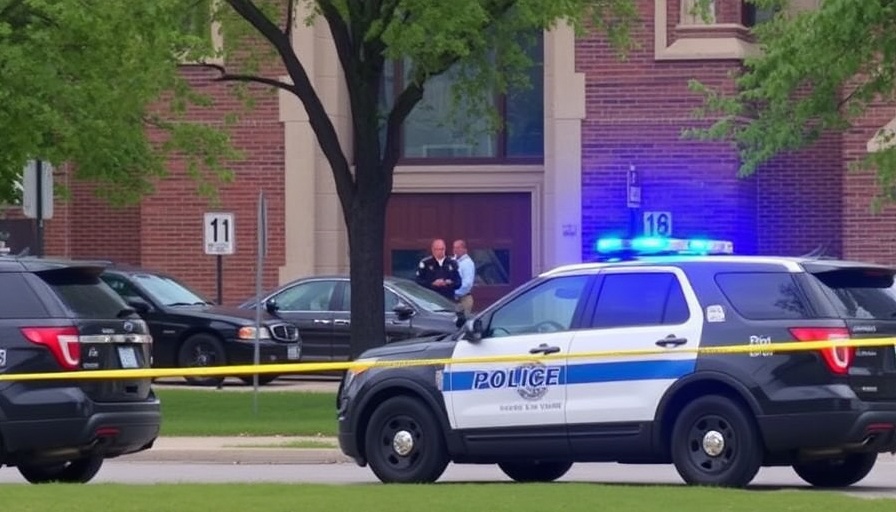
North Korea’s Strategic Move: Dismantling Propaganda Loudspeakers
In a significant shift towards easing tensions with South Korea, North Korea has begun dismantling propaganda loudspeakers that have long been responsible for broadcasting messages across the border. This decision, verified by South Korea's military, represents a potential thaw in the icy relations that have characterized the peninsula for decades. The loudspeakers were not merely instruments of communication; they served as symbols of the discord that has persisted since the end of the Korean War.
Historical Context: The Role of Propaganda in the Korean Divide
To fully grasp the implications of this decision, one must consider the historical context of these loudspeakers. Established in the years following the Korean War, these devices have continually bombarded the South with messages extolling the virtues of the North’s regime while denouncing the South Korean government. They were intended not just to inform but to influence and intimidate. The modern-day relationship between North and South Korea is steeped in propaganda, serving as a battleground for ideological supremacy.
Reactions to Dismantling: Mixed Responses from Both Sides
The reaction to North Korea's move has varied widely. In South Korea, politicians have expressed cautious optimism. The dismantling has elicited applause from some who view this as a step towards a possible reconciliation that may pave the way for future dialogues. However, skepticism remains prevalent, with many questioning whether this gesture is genuine or merely a tactical maneuver. The government’s immediate past responses to provocation, particularly during the Trump administration and the Biden administration's subsequent foreign policy approach, have emphasized a wary stance towards any gestures from the North.
Current Political Climate: Evaluating North Korean Diplomacy
North Korea’s current leadership has initiated significant changes in how it engages with the outside world, pivoting from a combative posture to one of cautious diplomacy. This recalibration might reflect a shift in internal politics, especially in the context of Kim Jong-un’s regime, which has faced its share of challenges, including economic sanctions and pressures related to pandemic responses. Moreover, the international response to North Korean actions has shifted, with a focus on diplomacy occurring within a broader framework of national security, particularly by the administrations of both Biden and the Senate-led legislation that seeks to address North Korea’s nuclear ambitions.
Future Predictions: The Importance of Bilateral Engagement
Looking ahead, the dismantling of these loudspeakers could serve as a precursor to more substantive negotiations surrounding nuclear disarmament and military de-escalation. As both Koreas grapple with their respective internal challenges—South Korea with its political landscape influenced by upcoming elections, and North Korea burdened by sanctions and economic strains—this moment offers a juncture for potential diplomatic breakthroughs. The recent attention on foreign policy, particularly concerning the United Nations’ stance on North Korea, suggests an atmosphere ripe for negotiation.
Practical Insights: What This Means for Regional Security
For professionals in the field of international relations and security, this development signifies more than just a reduction in loudspeaker broadcasts; it highlights the necessity for ongoing engagement with North Korea. Policymakers must consider both the practicalities of diplomacy and the symbolic gestures that accompany such actions. Engaging with North Korea will require a careful balance of accountability alongside incentives designed to encourage compliance with international norms related to nuclear weapons and human rights.
Actionable Insights for Policy Professionals
This timely move provides valuable insights into how policy professionals can approach negotiations with North Korea moving forward. Understanding the psychological and strategic implications of propaganda can inform diplomatic tactics while emphasizing the importance of sustained engagement even amid uncertainties. Building coalitions—whether through Congress, international coalitions, or bipartisan efforts—remains vital in fostering a credible approach to North Korea.
As we reflect on this development, it’s crucial for experts and stakeholders to keep informed about the evolving dynamics on the Korean peninsula. The dismantling of propaganda loudspeakers could emerge as a focal point in future discussions on international relations, impacting everything from domestic policy to broader geopolitical strategies.
 Add Row
Add Row  Add
Add 




Write A Comment